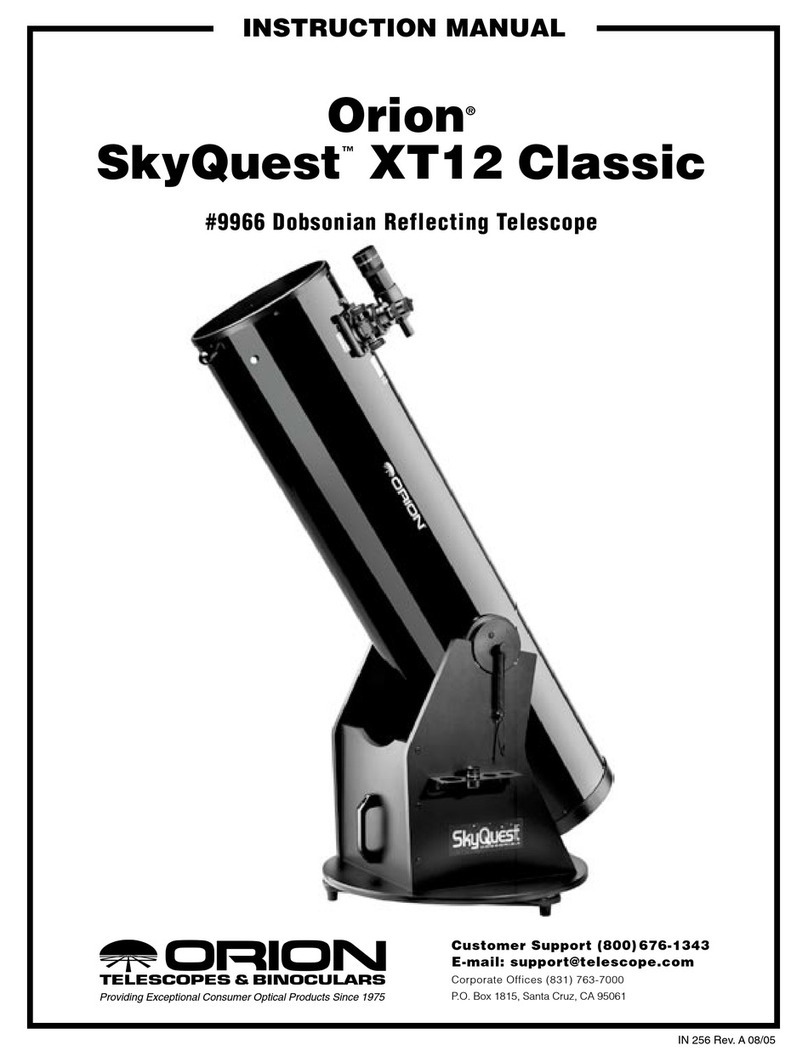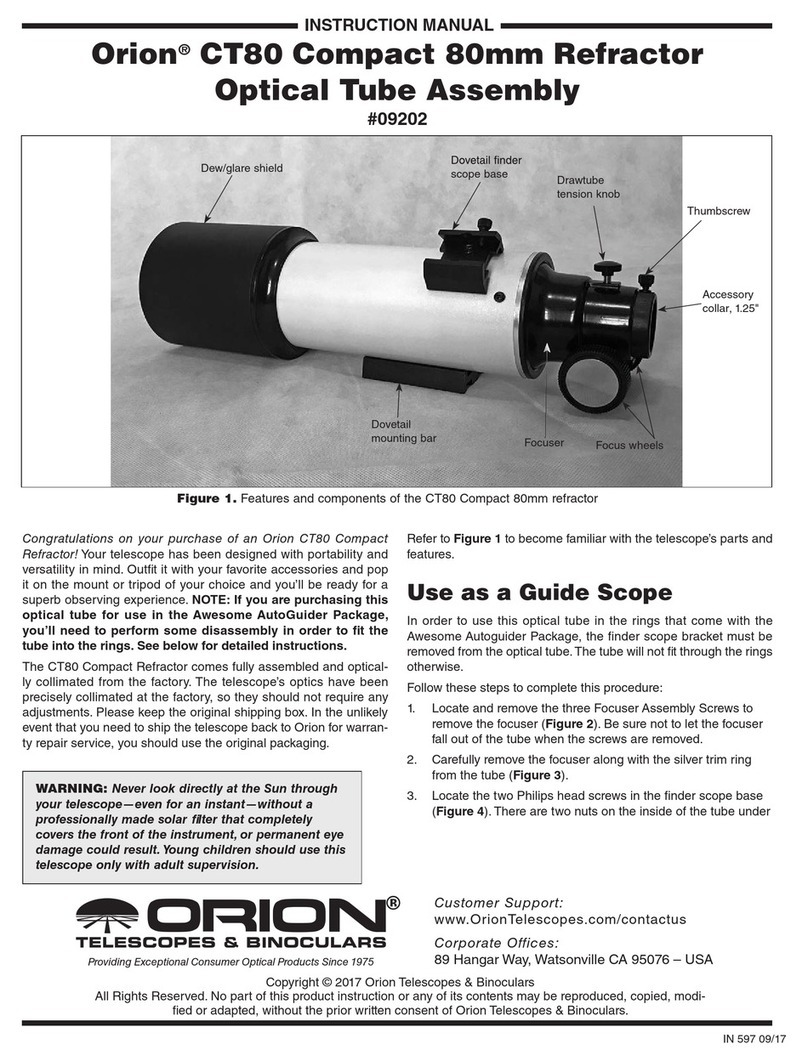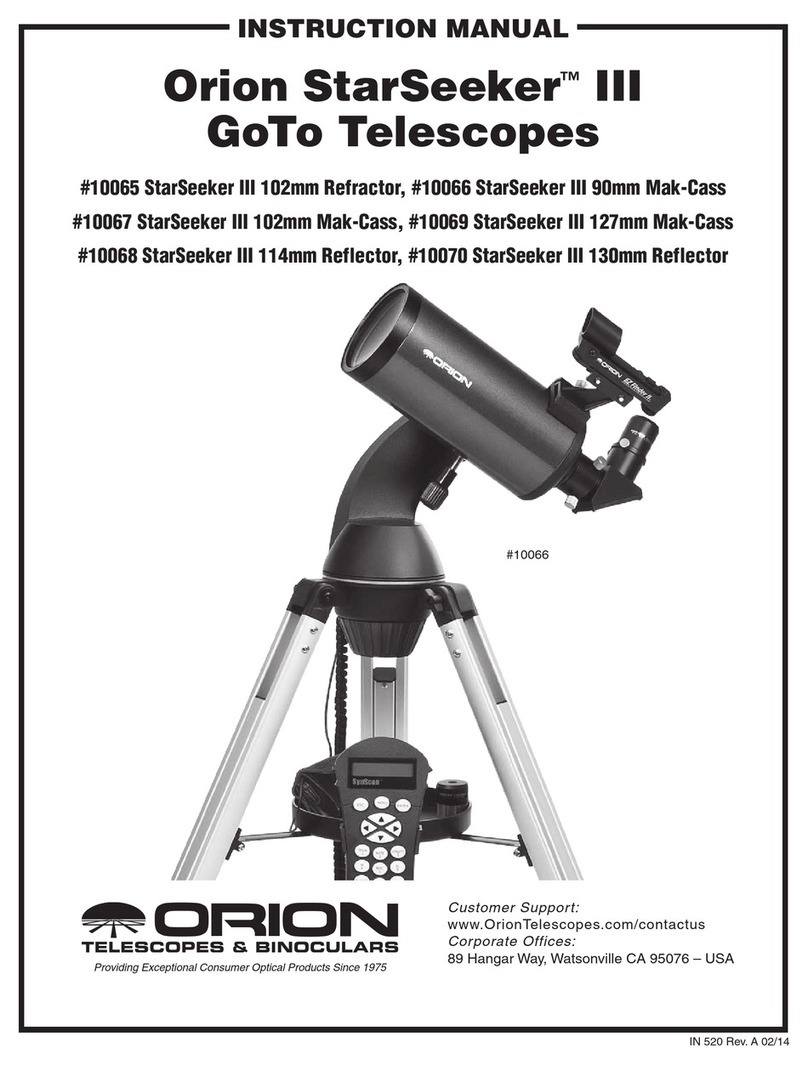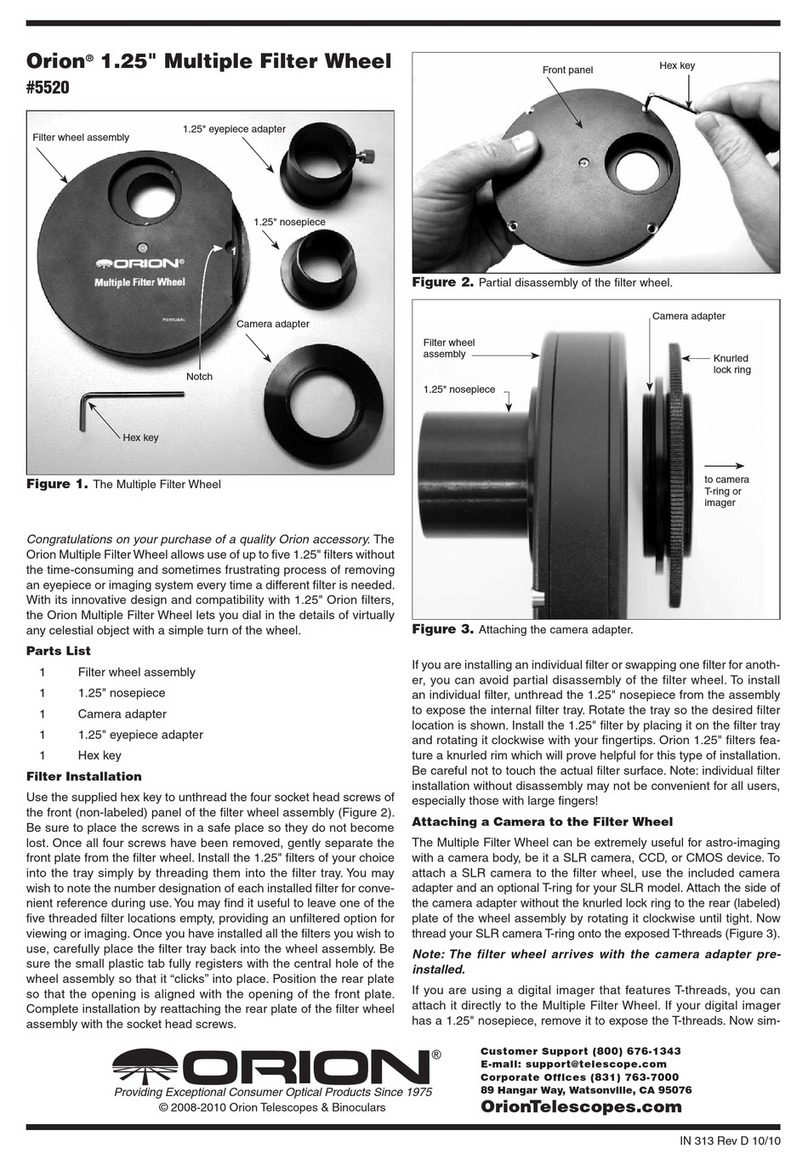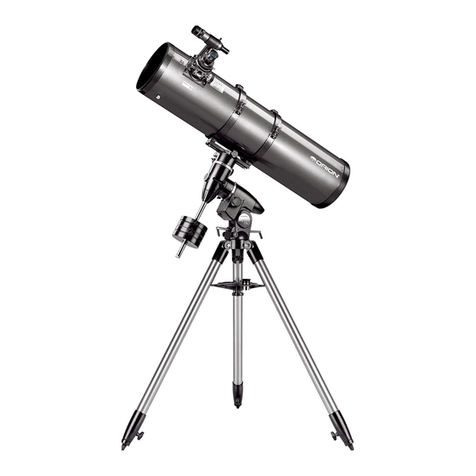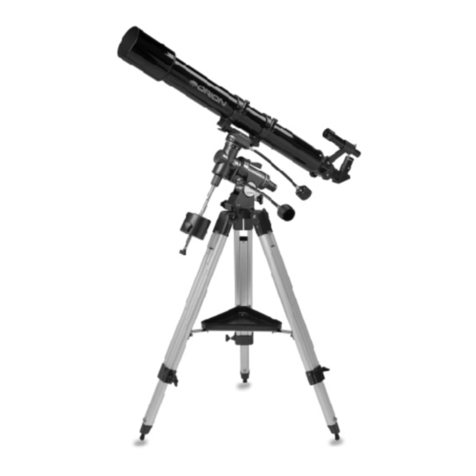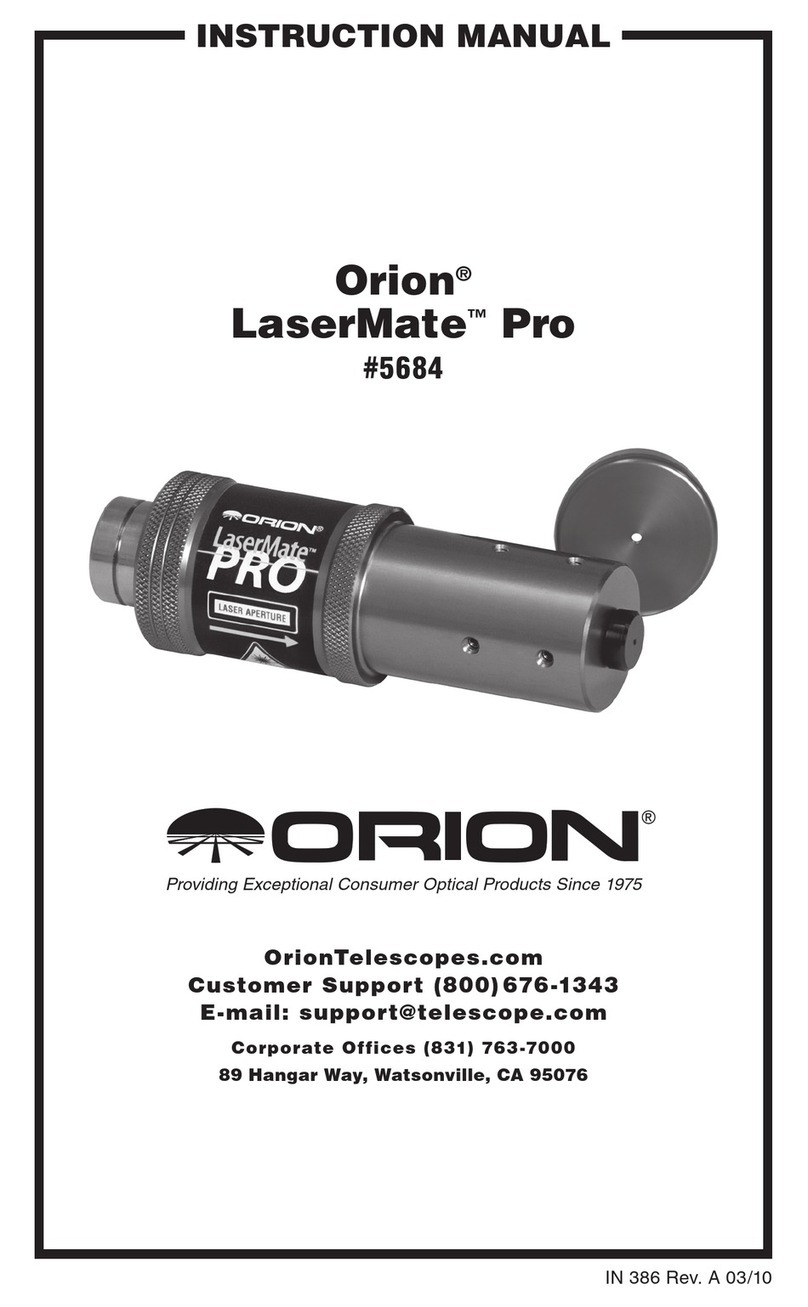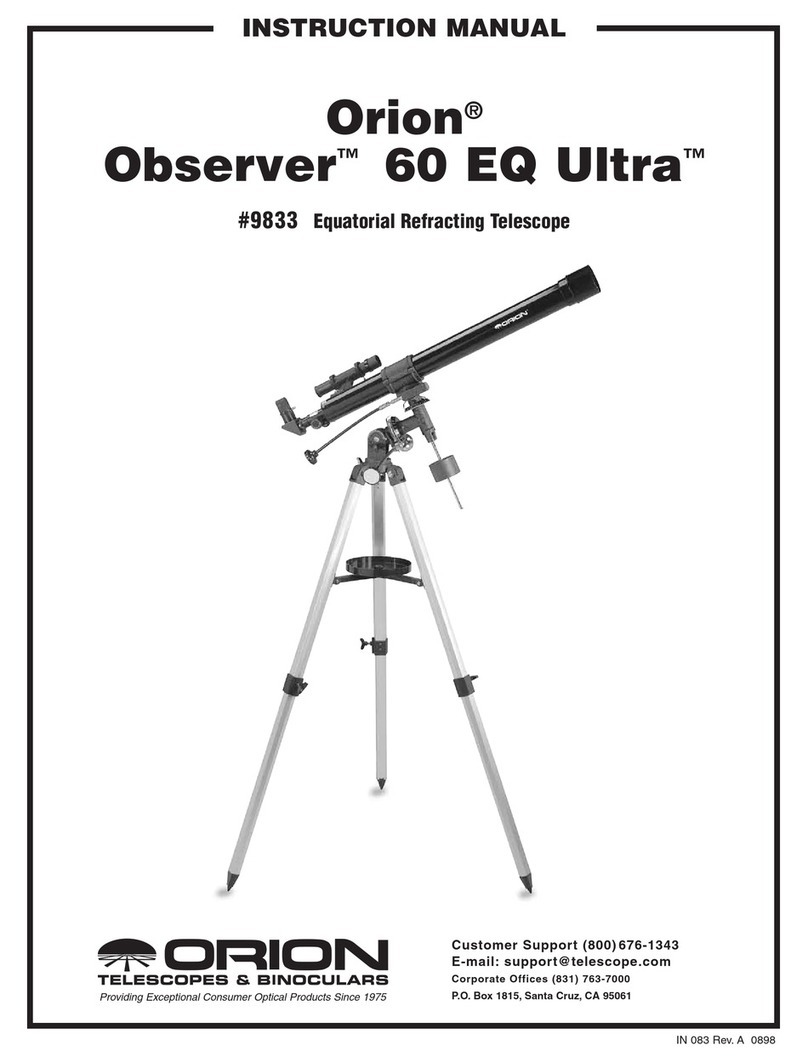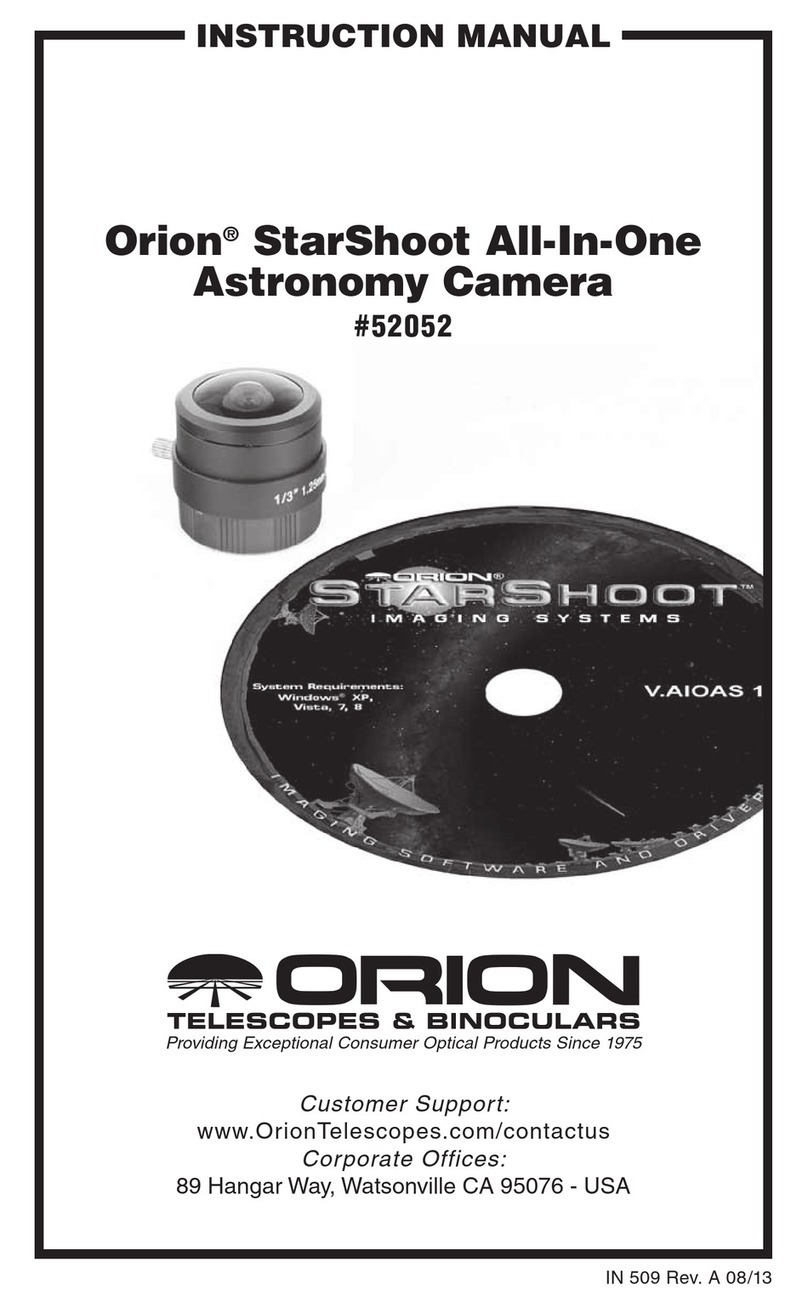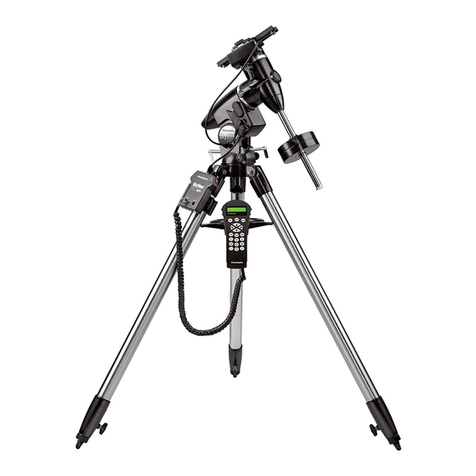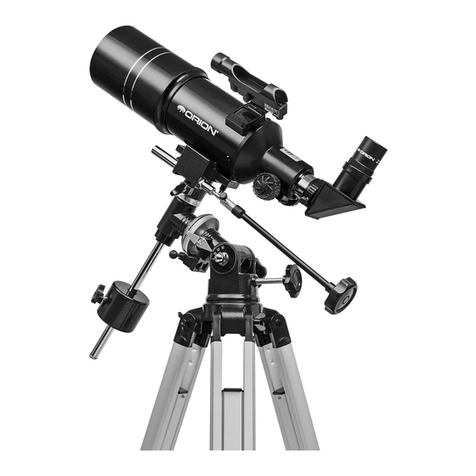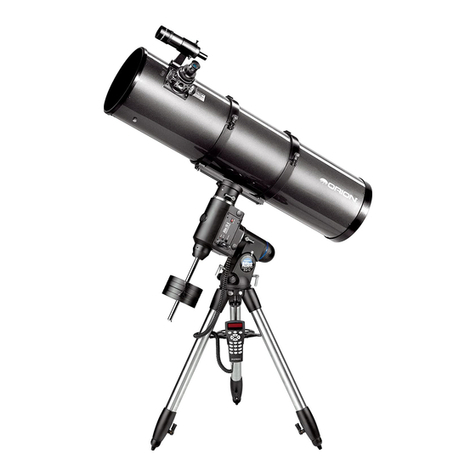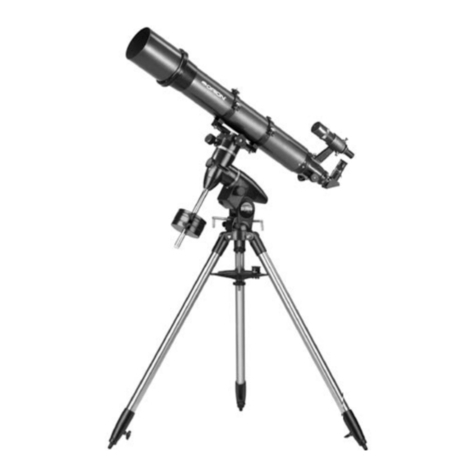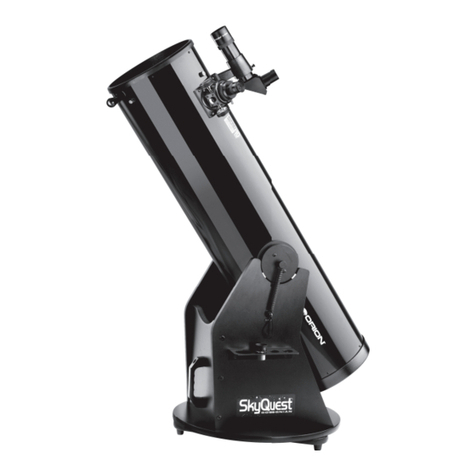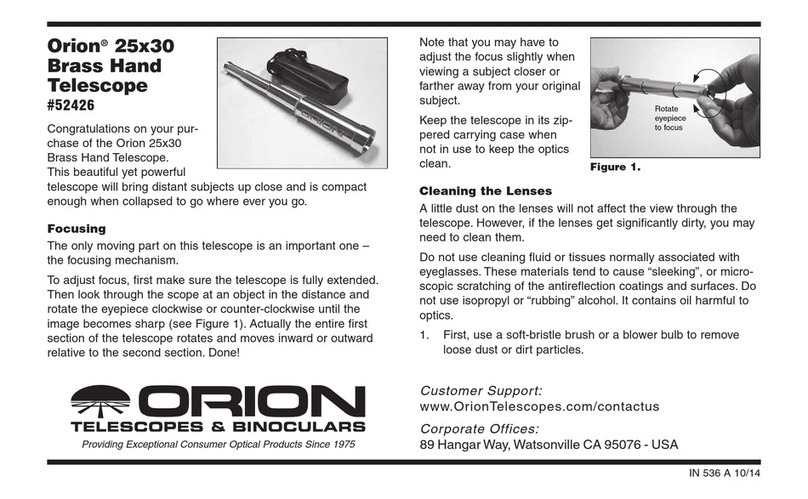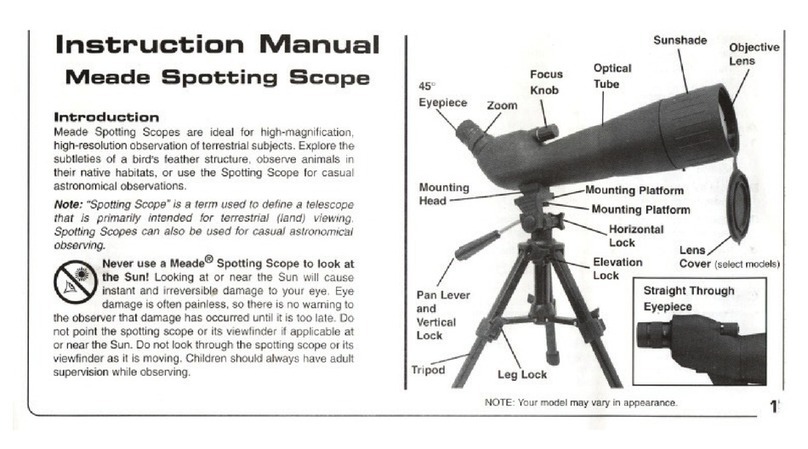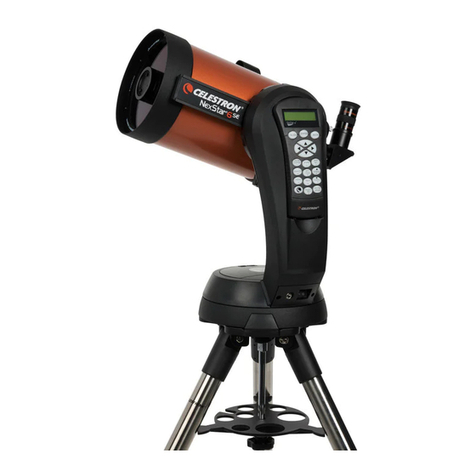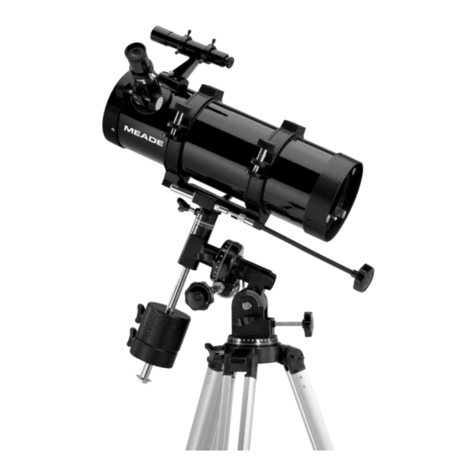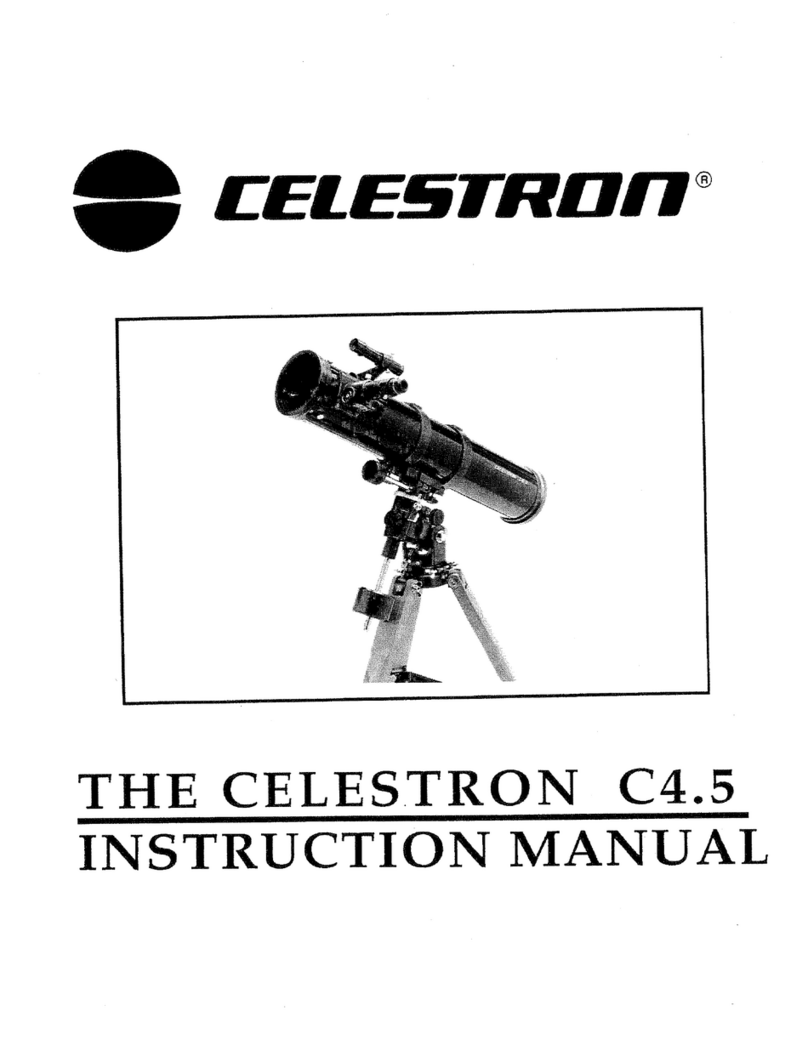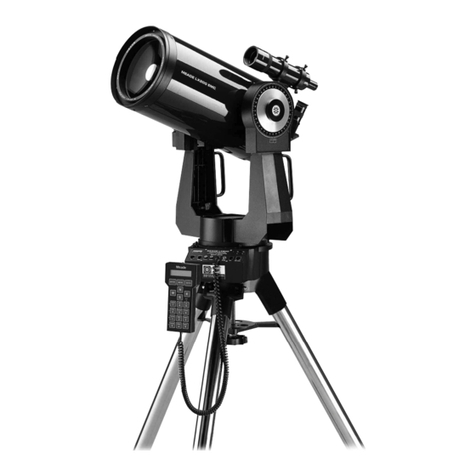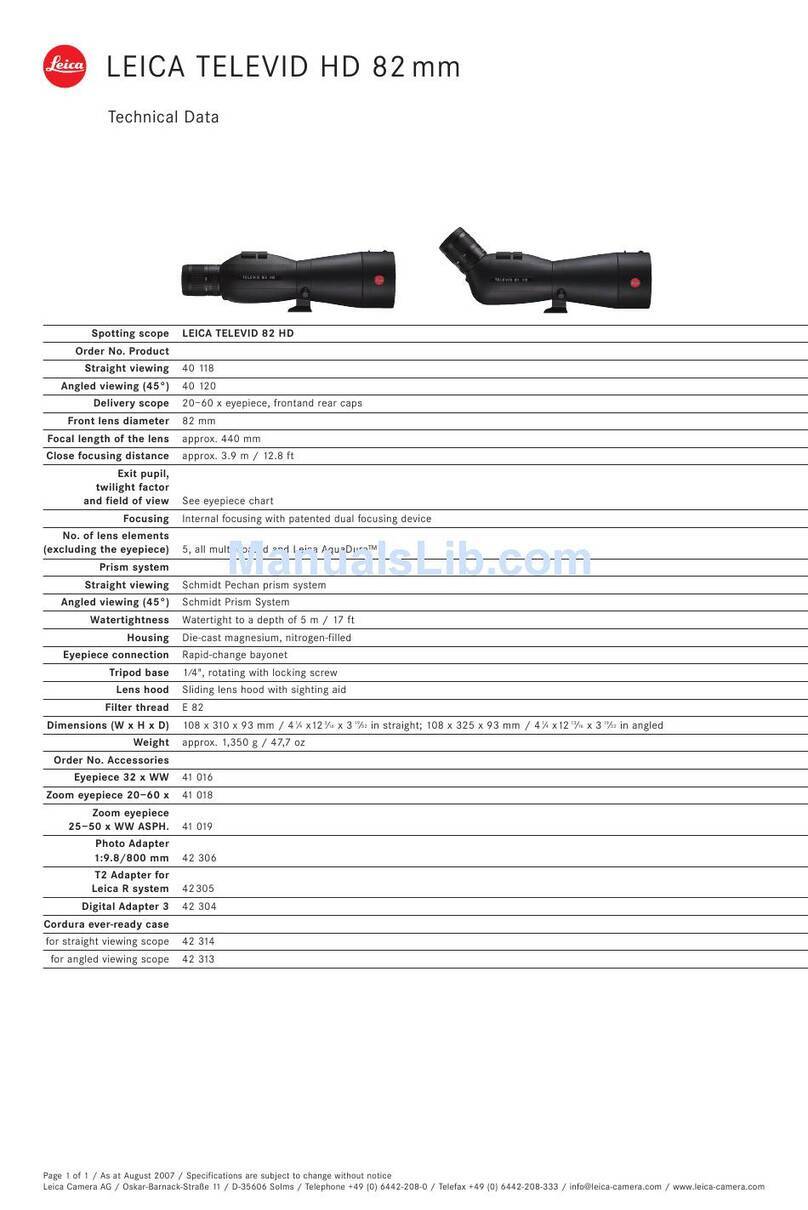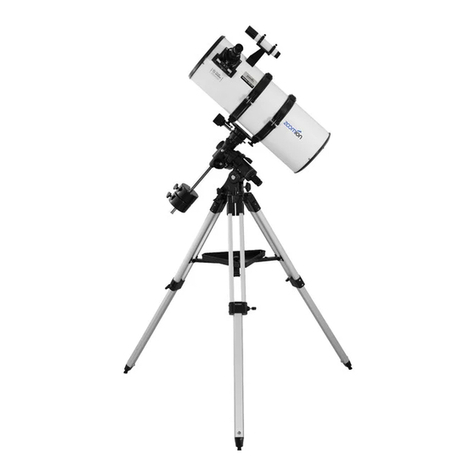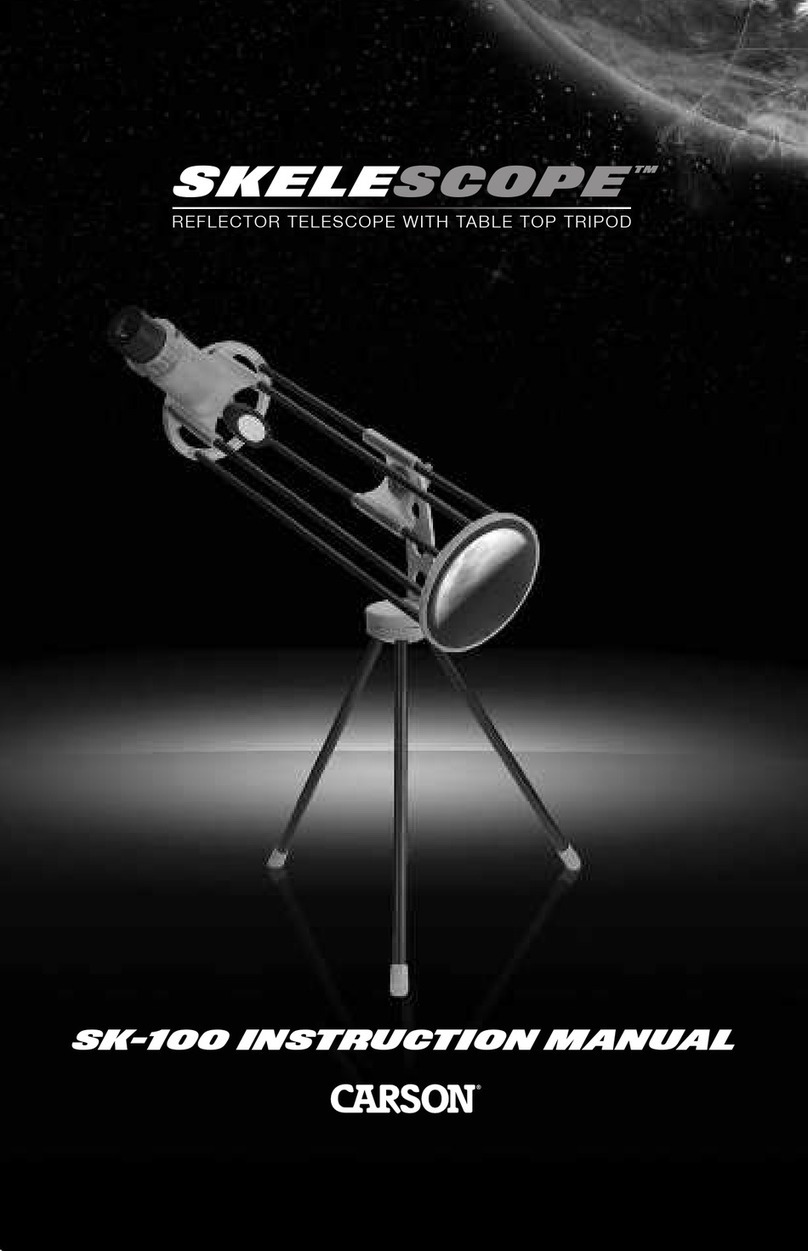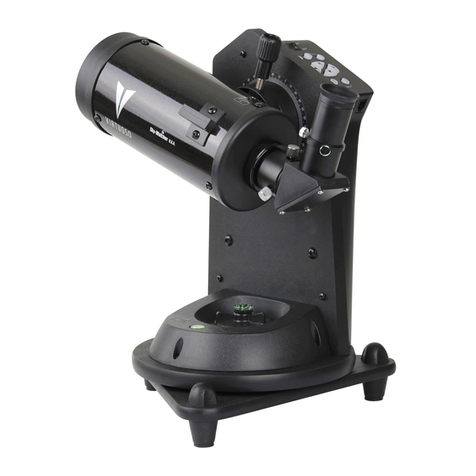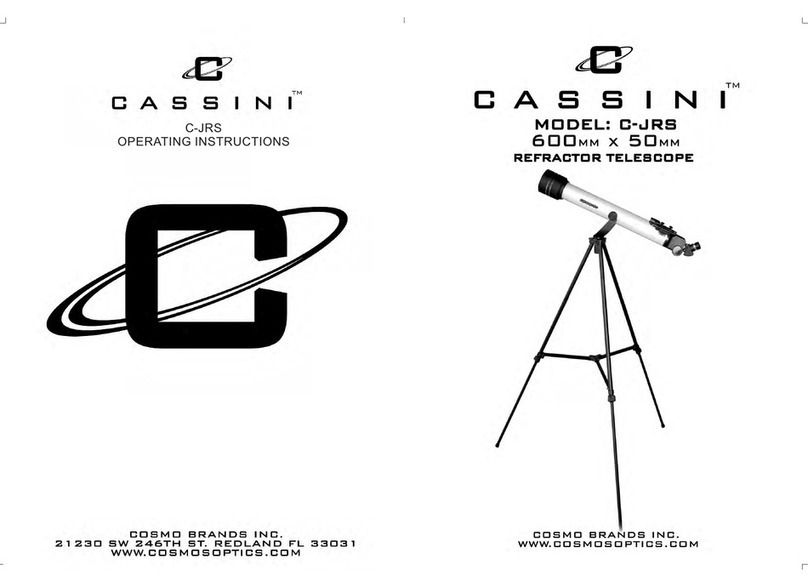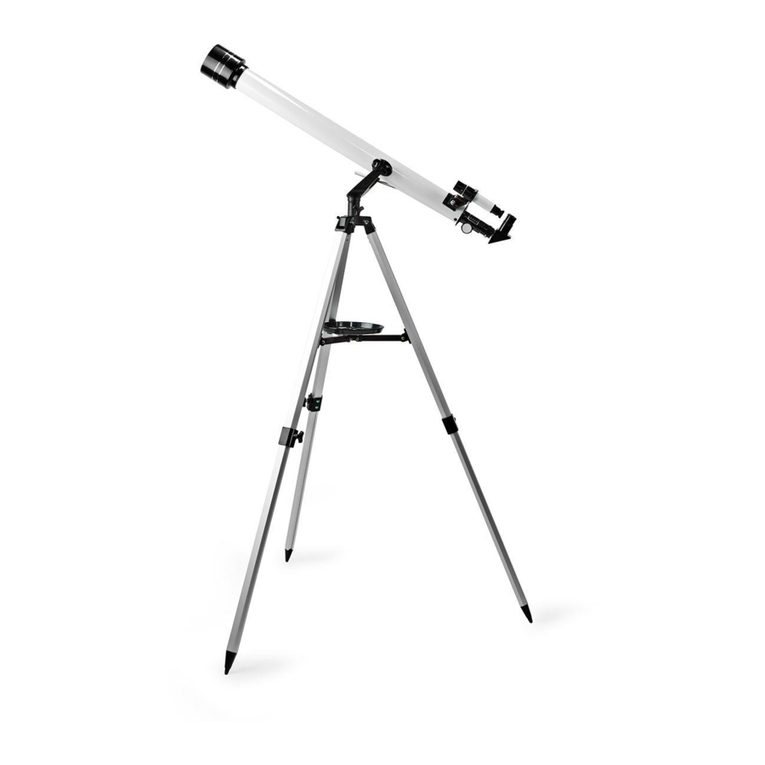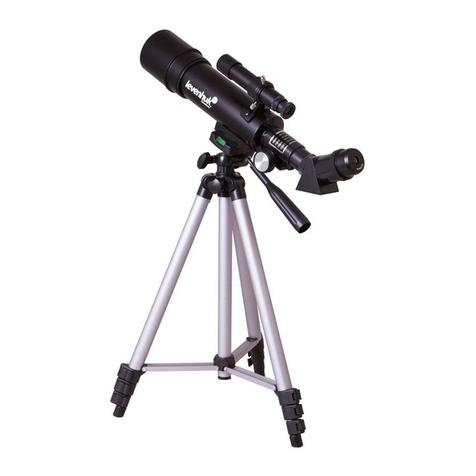
your telescope will be a learning experience. Each time you
work with your telescope it will get easier to use, and stellar
objects will become easier to find. Take it from us, there is
big difference between looking at a well-made full-color NASA
image of a deep-sky object in a lit room during the daytime,
and seeing that same object in your telescope at night. One
can merely be a pretty image someone gave to you. The other
is an experience you will never forget!
Objects to Observe
Now that you are all set up and ready to go, one critical deci-
sion must be made: what to look at?
A. The Moon
With its rocky surface, the Moon is one of the easiest and most
interesting targets to view with your telescope. Lunar craters,
marias, and even mountain ranges can all be clearly seen
from a distance of 238,000 miles away! With its ever-chang-
ing phases, you’ll get a new view of the Moon every night.
The best time to observe our one and only natural satellite
is during a partial phase, that is, when the Moon is NOT full.
During partial phases, shadows are cast on the surface, which
reveal more detail, especially right along the border between
the dark and light portions of the disk (called the “terminator”).
A full Moon is too bright and devoid of surface shadows to
yield a pleasing view. Make sure to observe the Moon when it
is well above the horizon to get the sharpest images.
Use an optional Moon filter to dim the Moon when it is very
bright. It simply threads onto the bottom of the eyepieces (you
must first remove the eyepiece from the focuser to attach a
filter). You’ll find that the Moon filter improves viewing com-
fort, and also helps to bring out subtle features on the lunar
surface.
B. The Planets
The planets don’t stay put like the stars, so to find them you
should refer to Sky Calendar at our website (telescope.com),
or to charts published monthly in Astronomy, Sky & Tele-
scope, or other astronomy magazines. Venus, Mars, Jupiter,
and Saturn are the brightest objects in the sky after the Sun
and the Moon. Your SpaceProbe 3 EQ is capable of showing
you these planets in some detail. Other planets may be visible
but will likely appear star-like. Because planets are quite small
in apparent size, optional higher-power eyepieces are recom-
mended and often needed for detailed observations. Not all
the planets are generally visible at any one time.
JUPITER: The largest planet, Jupiter, is a great subject for
observation. You can see the disk of the giant planet and
watch the ever-changing positions of its four largest moons—
Io, Callisto, Europa, and Ganymede.
SATURN: The ringed planet is a breathtaking sight when it is
well positioned. The tilt angle of the rings varies over a period
of many years; sometimes they are seen edge-on, while at
other times they are broadside and look like giant “ears” on
each side of Saturn’s disk. A steady atmosphere (good see-
ing) is necessary for a good view.You will probably see a bright
“star” close by, which is Saturn’s brightest moon, Titan.
VENUS: At its brightest, Venus is the most luminous object in
the sky, excluding the Sun and the Moon. It is so bright that
sometimes it is visible to the naked eye during full daylight!
Ironically, Venus appears as a thin crescent, not a full disk,
when at its peak brightness. Because it is so close to the Sun,
it never wanders too far from the morning or evening horizon.
No surface markings can be seen on Venus, which is always
shrouded in dense clouds.
MARS: The Red Planet makes its closest approach to Earth
every two years. During close approaches you’ll see a red
disk, and may be able to see the polar ice cap.
C. The Stars
Stars will appear like twinkling points of light. Even powerful
telescopes cannot magnify stars to appear as more than a
point of light. You can, however, enjoy the different colors of
the stars and locate many pretty double and multiple stars.
The famous “Double-Double” in the constellation Lyra and the
gorgeous two-color double star Albireo in Cygnus are favor-
ites. Defocusing a star slightly can help bring out its color.
D. Deep-Sky Objects
Under dark skies, you can observe a wealth of fascinat-
ing deep-sky objects, including gaseous nebulas, open and
globular star clusters, and a variety of different types of galax-
ies. Most deep-sky objects are very faint, so it is important
that you find an observing site well away from light pollution.
Take plenty of time to let your eyes adjust to the darkness.
Do not expect these subjects to appear like the photographs
you see in books and magazines; most will look like dim gray
smudges. Our eyes are not sensitive enough to see color in
deep-sky objects except in a few of the brightest ones. But as
you become more experienced and your observing skills get
sharper, you will be able to ferret out more and more subtle
details and structure.
To find deep sky objects in the sky, it is best to consult a star
chart or Planisphere. These guides will help you locate the
brightest and best deep-sky objects for viewing with your
SpaceProbe 3 EQ.
7. Care and Maintenance
If you give your telescope reasonable care, it will last a lifetime.
Store it in a clean, dry, dust free place, safe from rapid chang-
es in temperature and humidity. Do not store the telescope
outdoors, although storage in a garage or shed is OK. Small
components like eyepieces and other accessories should be
kept in a protective box or storage case. Keep the caps on the
front of the telescope and on the focuser drawtube when not
in use.
Your SpaceProbe 3 EQ telescope requires very little mechani-
cal maintenance. The optical tube is steel and has a smooth
painted finish that is fairly scratch resistant. If a scratch does
appear, it will not harm the telescope. Refer to the appendix
B at the end of this manual for details of how to clean your
telescope’s optics.
10
